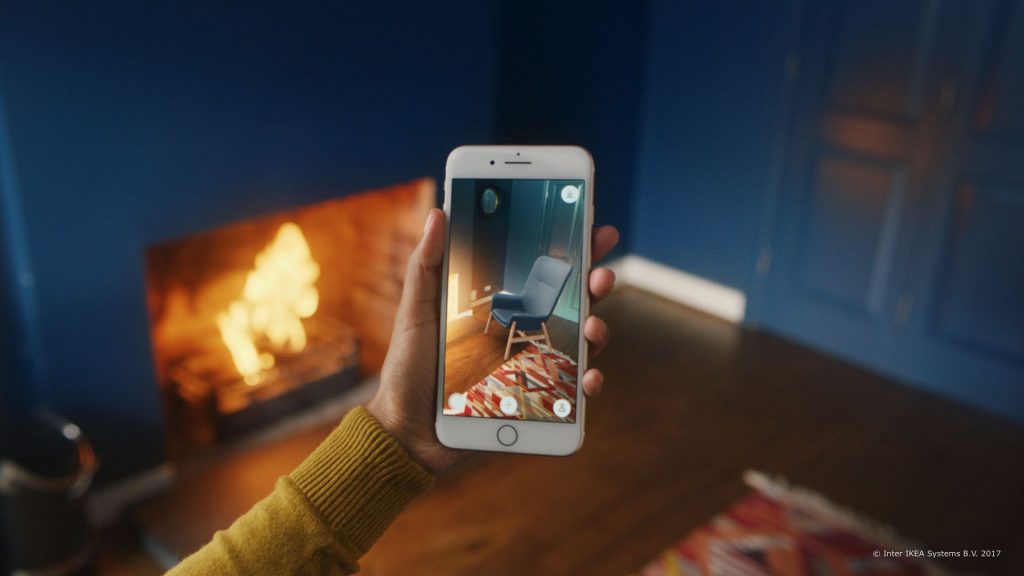The world of marketing is in a constant state of flux, forever adapting to capture consumer attention in this competitive marketing landscape. Enter Augmented Reality (AR) and Artificial Intelligence (AI), a powerful duo transforming how brands connect with their audience. Currently the AR market is worth an estimated $32.1 billion and the market is predicted to nearly double between 2024 and 2028 (Statista).
AR overlays digital elements onto the physical world, blurring the lines between virtual and real. Imagine trying on clothes without stepping into a store, visualising furniture in your living room before you buy it, or even bringing historical landmarks to life on your smartphone screen. This is the type of magic that comes to life when AI and AR join hands.
AI facilitates personalised experiences, creating a captivating and interactive space for brands to tell their stories. AR and AI are already making waves in the marketing world, also offering a glimpse into the future of brand engagement. Here’s how:
Bridging the Physical and Digital Divide: AR allows brands to create immersive experiences for consumers, bringing products to life in ways that were previously unimaginable. Approximately 2 in 5 (40%) consumers claim they are likely to pay more for a product that is initially available to test with AR (Source: ThinkMobiles). AR seamlessly blends the convenience of online shopping with the tangibility of physical interaction. For example: Ikea Place– This AR app lets users visualize furniture in their homes before they buy, reducing the risk of impulse purchases and ensuring customer satisfaction (Read more here).

Personalized Experiences: AI takes AR a step further by tailoring the experience to individual users. By analyzing user data and preferences, AI personalizes the AR experience, making it more relevant and engaging. A live example for this is, Loreal’s app that recommends makeup shades based on your skin tone (try it out!). Around 9 in 10 Gen Zers have a strong interest in AR shopping (Source: dynata). This feature eliminates the need to visit physical stores and test products in person, saving a significant amount of time.
AR also enables Interactive Marketing Campaigns that capture attention and drive engagement. AR ads are performing incredibly well with conversion rates upto 80% range (Source: Linkedin). For example, brands like L’oreal and Shopify increased their conversion rates by using AR in their marketing campaigns. Another live example for this is Coca-Cola’s AR campaign transformed its packaging into a virtual Christmas sleigh ride, delighting consumers and encouraging social sharing (Read more here). By blending digital elements with the physical world, brands create memorable experiences that resonate with audiences.
Boost engagement with interactivity: AR and AI pave the way for interactive brand storytelling. Think scavenger hunts that lead customers through a store using AR clues like how Foot Locker & Nike launched ‘The Hunt’ an AR scavenger hunt for limited-edition sneakers, driving immense customer engagement and sales (Watch it here). This interactive approach not only captures attention but also creates a lasting impression of the brand.
Gamification of Brand Experiences: AR and AI power gamified experiences that entertain and engage audiences. For example, Pokemon GO leverages AR technology to overlay digital creatures onto the real world, encouraging players to explore their surroundings and interact with the game environment (Read more). By gamifying brand experiences, companies drive participation and build loyalty among consumers. VR gaming was the second most common AR/VR use case in APAC at 20.3 percent that year (Source: Stastia)
Providing Data Driven Insights: AR and AI generate valuable data on consumer interactions and preferences, providing brands with actionable insights for future marketing initiatives. By analyzing this data, companies can optimize their strategies, refine their targeting, and deliver even more compelling immersive experiences to their audiences.
The Future is Immersive
The future of marketing is all about creating experiences that resonate with consumers on an emotional level. AR and AI, when used together, have the potential to transform brand interactions into immersive journeys. As technology continues to evolve, we can expect even more innovative and captivating marketing campaigns that blur the lines between the physical and digital worlds.



